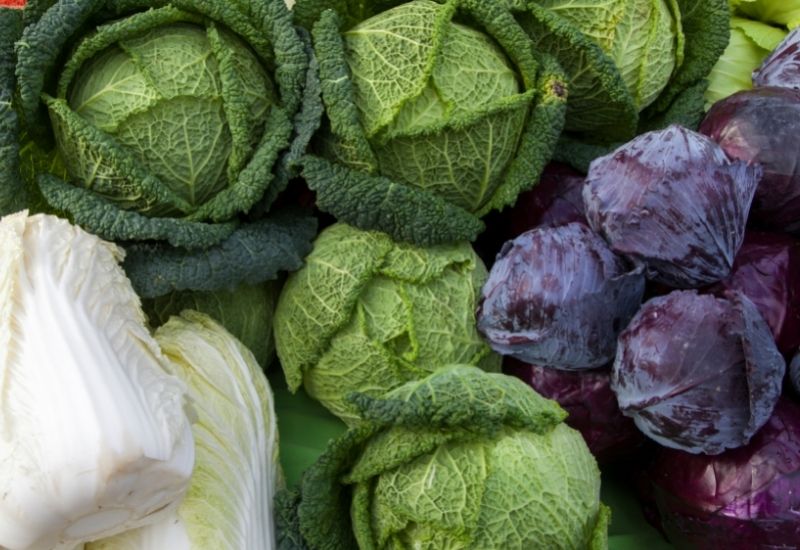
Cabbages are one of the earliest plants that you can put in the ground, and if you pick the right varieties of cabbage, they’ll store for months after the harvest ends.
There are many varieties of cabbage to choose from including green, red and purple cabbages as well as Napa and Savoy cabbages. Each type of cabbage is meant for different things or recipes. You might want a sweet cabbage or the tight leaves meant to make pounds of coleslaw.
What type of cabbage should you grow? It all depends on what you prefer and what kind of climate zone you live in!
Let’s take a look at some of the most popular cabbage varieties you can grow in your garden as well as what steps need to be taken for planting, growing, harvesting them.
14 Best Cabbage Varieties For Your Garden
No matter where you live right now, you can grow some variety of cabbage. Cabbage grows in USDA hardiness zones 1-10, but you do have to pick the right type for your growing zone.
You also need to look at the maturation rate for each type. If you have a shorter growing season, pick the earlier cabbages. If you have a long growing season, you can grow both early and late cabbages.
So, Here are the 14 different types of cabbage available to be grown in the garden.
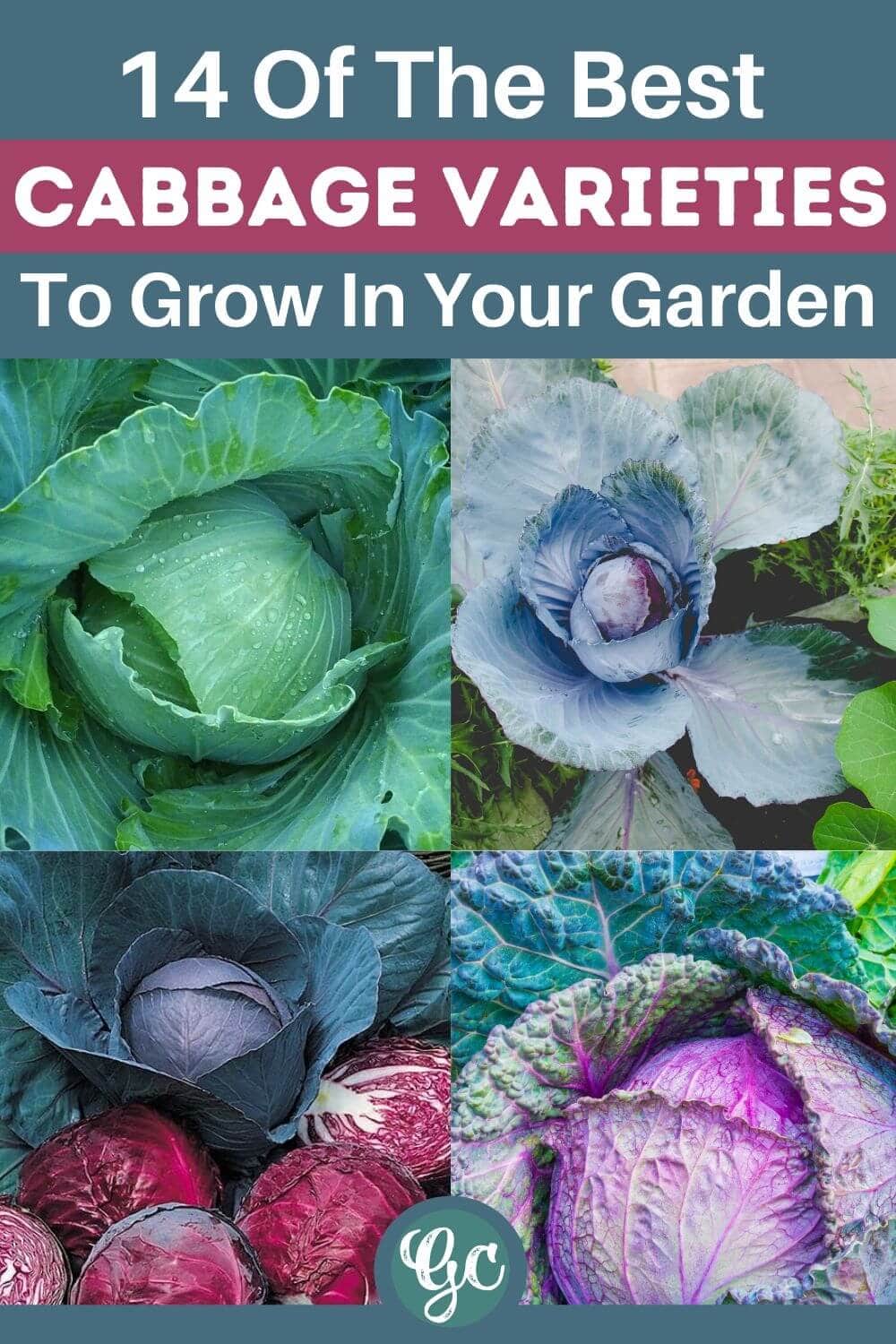
Early Cabbages – Maturing In 50-70 Days
1. Earliana Cabbage
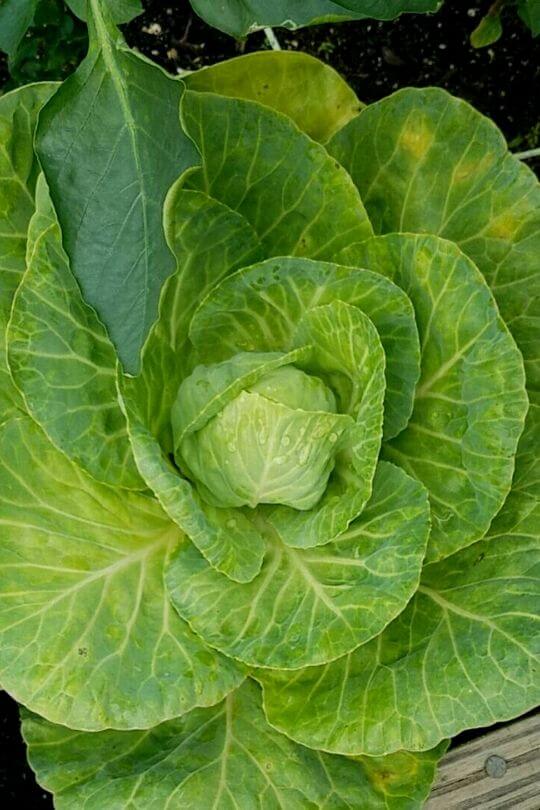
As you might guess by the name, Earliana is one of the earliest maturing cabbages on the market today. You can expect to harvest the heads within 60 days. That means in as early as two months, you can have full heads of cabbage in your garden.
Earliana heads only weigh around 2lbs, which is why they develop so fast. The heads measure 4-5 inches in diameter, in general. For best results, you do need to provide Earliana cabbages with full sunlight and space the plants 18-24 inches apart.
2. Golden Acre Cabbage
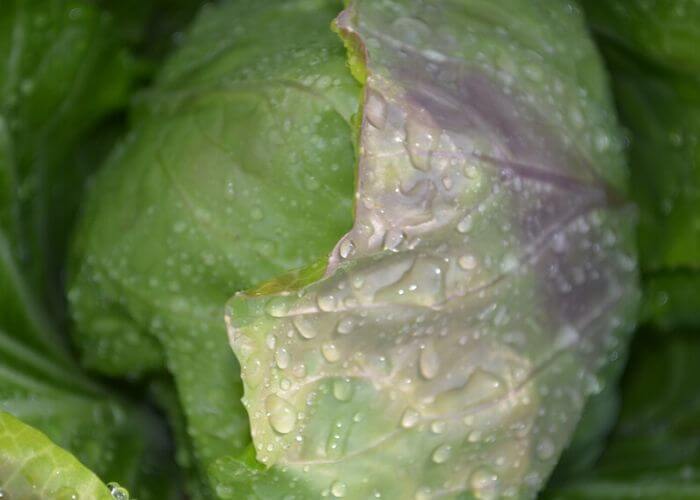
Here is another early cabbage variety that is ideal for small gardeners. You can plant this variety closer together; they tend to need 15-18 inches of distance from each other at maximum. So, if you have a small garden, you can fit more into an area.
Golden Acre cabbage produces heads that are 5-7 inches in diameter, and they all are uniform, round, and tightly folded together. They mature in 65 days!
This type of cabbage does best in full to partial sun, and it needs soil that has amended with organic matter, such as compost. You’ll find that Golden Acre is a hardier variety, resistant to yellowing diseases.
3. Gonzales Cabbage
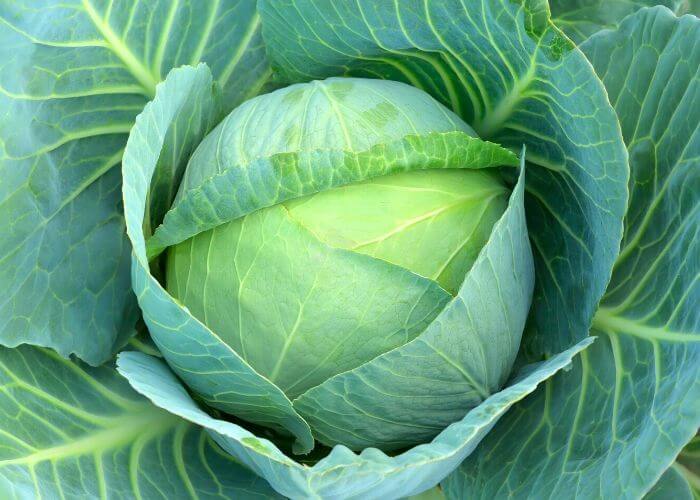
This cabbage variety produces mini cabbage heads that measure 4-6 inches across and weigh 1-2 pounds.
They aren’t the biggest type that you can grow in your garden, but since you can harvest them in as little as 55 days after planting, that makes sense.
Gonzales cabbage stands out because they produce deep blue-green, softball-sized heads. They’re dense, firm heads that are resistant to splitting.
The size of these heads are perfect; you can use one for two side servings or one big meal. Plus, they’re ready in less than two months; who can complain about that?
4. Parel Cabbage
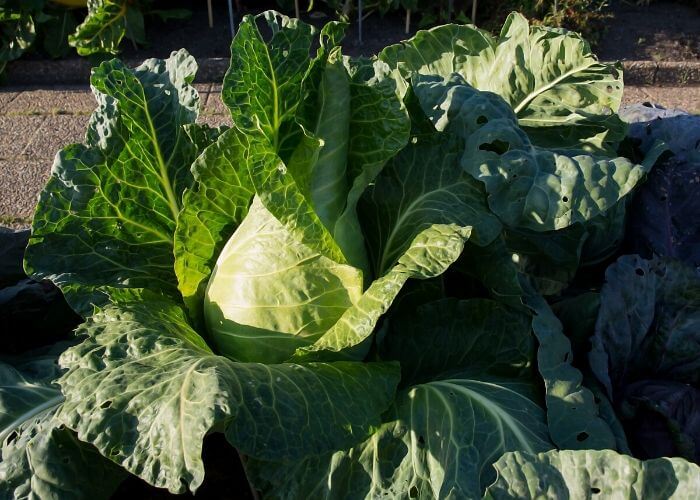
Parel cabbage is another early-season cabbage that can be ready to harvest as early as 45-50 days. That means it takes 6-7 weeks start to finish to grow full-grown cabbage heads. That’s impressive!
Parel cabbage forms tight, compact, green heads of cabbage that grows well in smaller space. The outer leaves have a bluish-green color that protects a white head. You’ll find that the leaves are juicy and sweeter than some of the other types.
The great thing about growing a cabbage variety that can be harvested so soon is that you can grow them several times in one growing season. You can also sow the seeds directly outside in the summer since they grow so quickly.
You can use Parel cabbage in many different recipes. It works well raw in salads and coleslaws, or you can pickle or roast them.
Mid-Season Cabbages – Maturing In 70-90 Days
5. Early Jersey Wakefield Cabbage

Early Jersey started in the United Kingdom, but now it has become a classic in the United States as well. It was introduced in the 1840s, and it was later sold commercially.
This variety has a heart or cone-shaped head that forms a point. The leaves are pale green, and the head will weigh 3-4 pounds each. You can harvest the heads about 70 days after planting.
6. Red Acre Cabbage
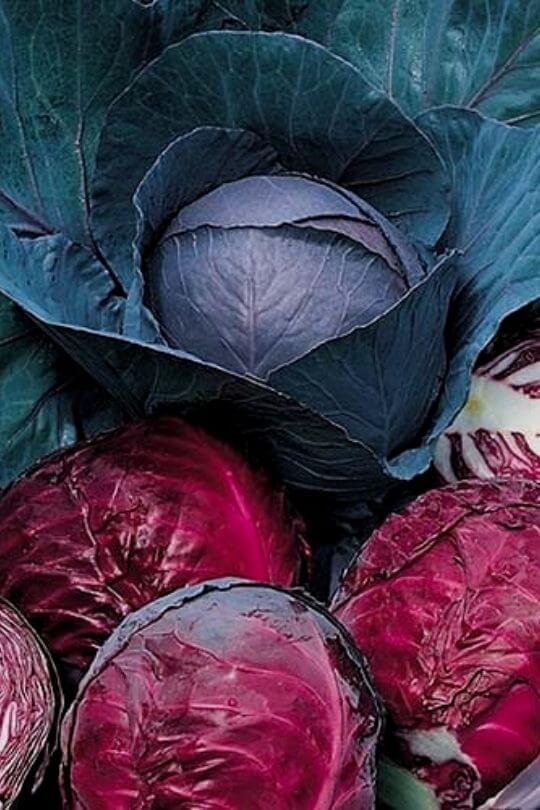
If you want a bright purple-red cabbage head, Red Acre is a fantastic choice for your garden, and it’ll make a statement on your plate.
When compared to other varieties, you’ll notice that it has a sweet flavor when used raw in salads or coleslaw recipes.
You can grow Red Acre in USDA zones 3-9, but make sure you plant it in full sunlight. Be sure that this variety has adequate drainage and plenty of water.
If you make sure it has its ideal conditions, you can expect the heads to weigh 4 pounds. They’ll be ready to harvest in 75-90 days.
7. Brunswick
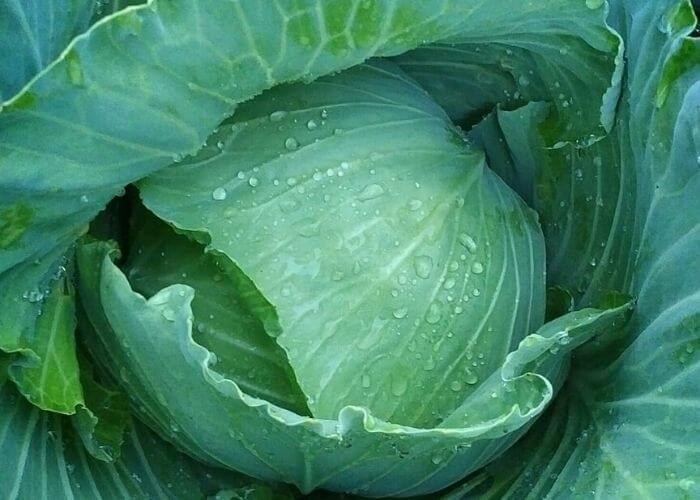
Brunswick cabbages mature in 85-90 days if optimal conditions are met. This variety is ideal if you’re looking for a cabbage that you can store throughout the winter.
It’s a German heirloom developed decades ago, and you can expect your solid heads to weigh between 6-9 pounds.
Northern gardeners find Brunswick cabbage to be a fantastic choice because it’s cold hardy. You should plan to plant in the spring or the fall, depending on your season.
Each plant needs 18-24 inches of space in full sunlight to reach the maximum size.
8. Charleston Wakefield
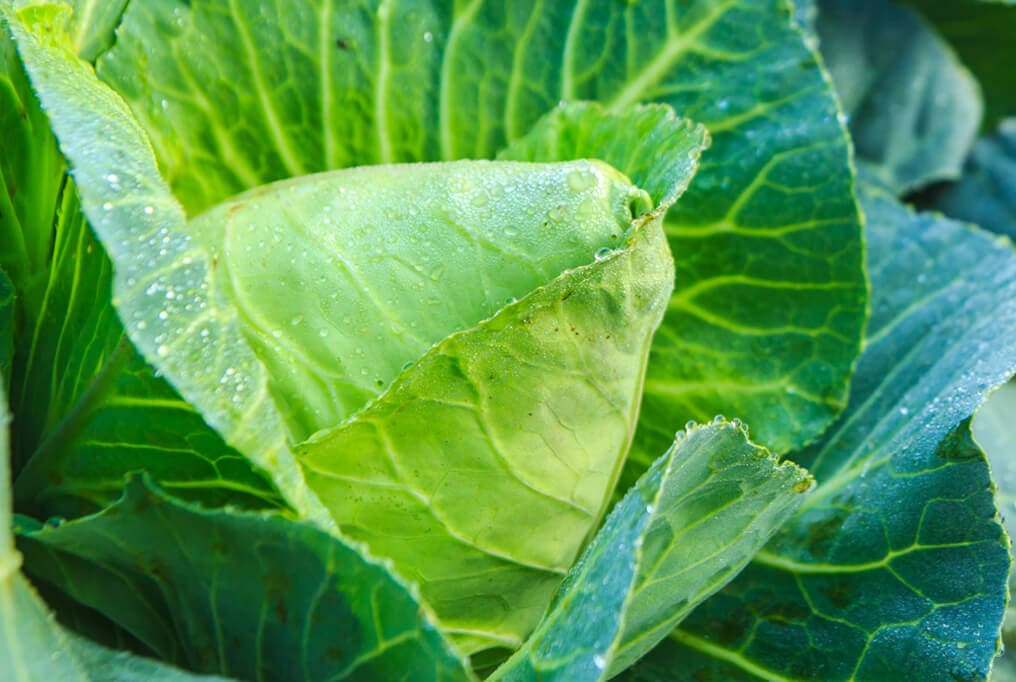
Image Source- https://hosstools.com/product/charleston-wakefield-cabbage
Do you want an heirloom with a strong history? Charleston Wakefield is an open-pollinated cabbage variety that goes all the way back into the 1890s.
You can grow it throughout most of the United States, even the southern states, because it is heat tolerant.
The heads are dark green with a conical shape, and the leaves are compacted together. Each head weighs between 4-6 pounds, taking 70-80 days to mature.
If you want to allow the heads to reach their maximum size, make sure you space the plants 18-24 inches apart.
Late-Season Or Storage Cabbages – Maturing In 90-125 Days
9. January King
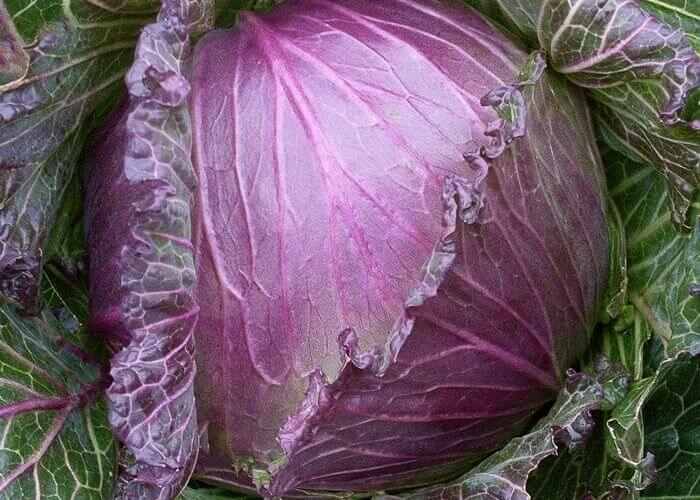
Here is one of the hardiest winter cabbages that you can grow! January King is an heirloom cabbage variety that is also a showstopper with massive green and purple leaves. The leaves are sweet and tender for recipes.
January King cabbage heads weigh between 3-5 pounds, taking 150-200 days to mature. That means not all gardeners can grow this cabbage; you need a long growing season.
It’s a cold-hardy plant that is intended for winter storage and winter gardening.
Make sure you plant January King in full sunlight and space the plants at least 18-24 inches apart. If you give it room to expand, you might get larger heads.
10. Late Flat Dutch
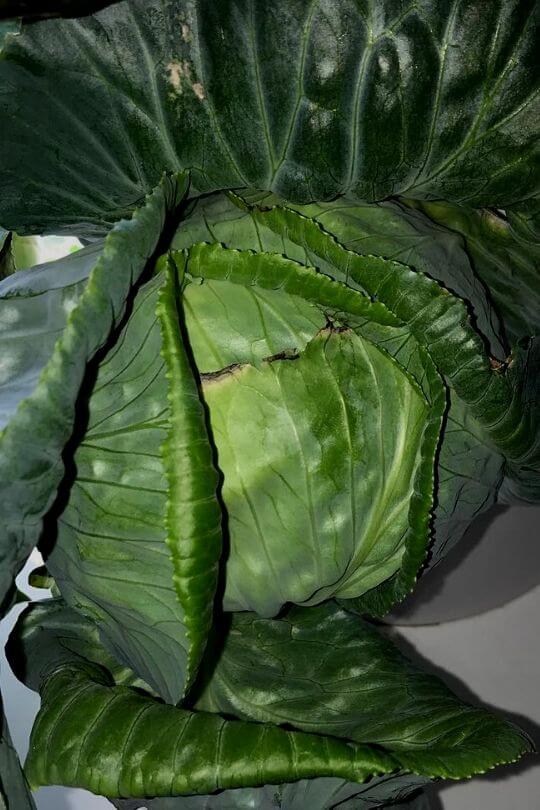
Bigger is often better, right? If you share that sentiment when it comes to gardening, you’ll want to include Late Flat Dutch in your garden as an optimal late-season cabbage variety.
Late Flat Dutch produces massive cabbage heads, weighing 10-15 pounds with pale, green leaves.
As you might imagine, due to its size, this does take longer to mature. It needs at least 100 days in the garden to be able to harvest. Due to its size, you do need to plant them two feet apart.
One of the great things about this variety of cabbage is that it can be grown in zones 1-10. If you’re in the cold regions, such as zones 1-3, you will need a season extender to reach the 100 days of growth.
11. Mammoth Red Rock
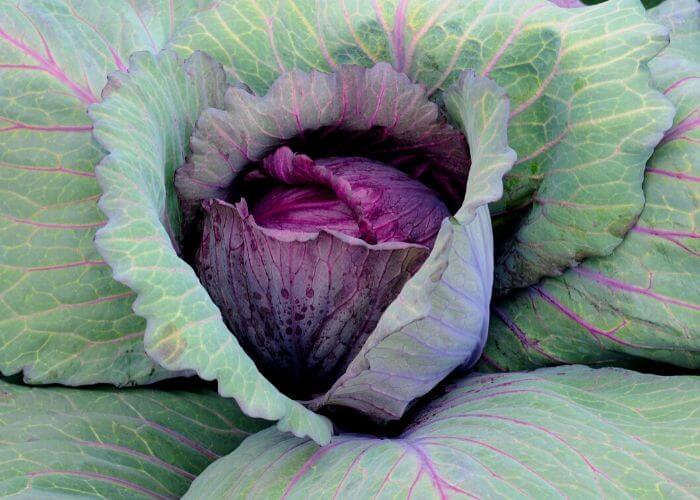
Some gardeners forget to include red cabbage in their selections or completely discount them as just decorative, but that would be wrong.
Red cabbage has its place in many different recipes, and Mammoth Red Rock dates back to 1889. That’s a lot of history!
From the name, you might guess that this variety produces large heads that measure 8-10 inches in diameter, weighing up to 8 pounds. That’s a lot of cabbage!
The good thing about Mammoth Red Rock is that it grows well in zones 1-10. Make sure that you plant this variety in full sunlight, spacing them 24 inches apart. You can start to harvest these heads after 90-100 days.
12. Savory Perfection
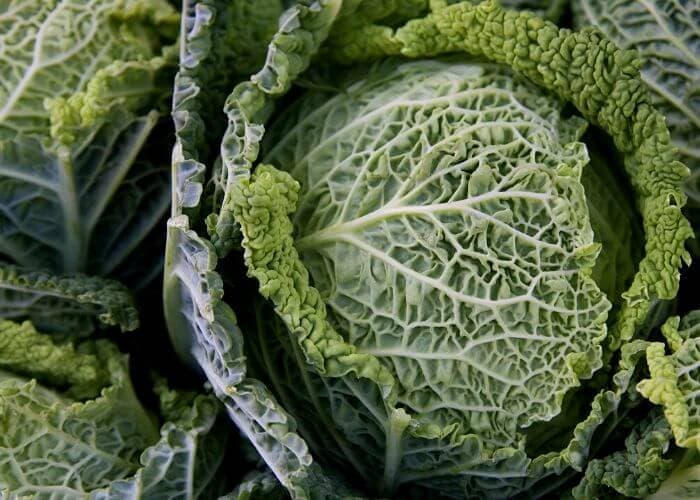
Looking for a savory cabbage for recipes? Then Savory Perfection is a great choice, and it grows well in USDA zones 3-12.
This type of cabbage produces heads that measure 4-6 inches in diameter, and they can be ready to harvest around 90 days after you transplant into the garden.
Be sure to plant Savory Perfection in full sunlight, spaced at least 18 inches apart. That will encourage optimal growth.
Chinese (Napa) Cabbages – Maturing In 50-70 Days
13. Rubicon
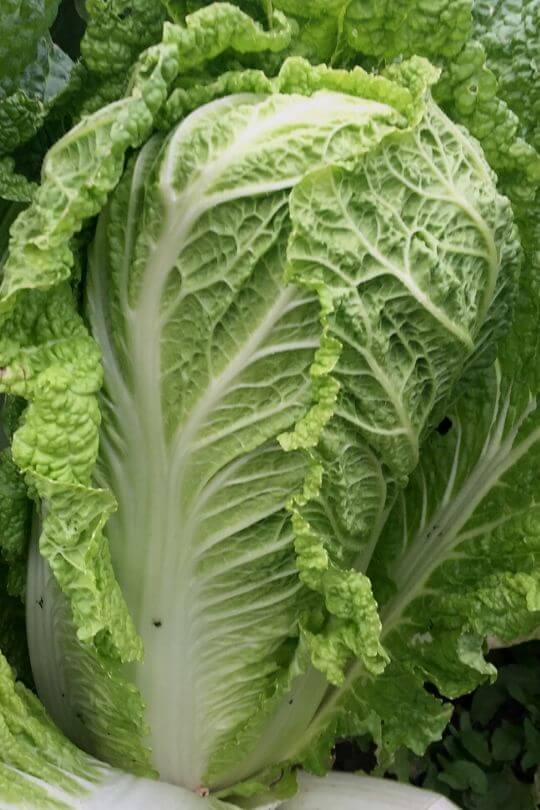
If you want Napa cabbage, give Rubicon a try! This cultivar develops in 52-55 days, and it provides high yields of cabbage leaves.
The heads are 8-12 inches tall, weighing 5-6 lbs. It produces cabbage that has dark green leaves and white ribs, the perfect napa cabbage.
Since it grows so quickly, you can plant in both the spring and the fall. It resists bolting due to heat and also diseases.
Rubicon is a well-known choice for farmer’s markets. Not only does it have a great flavor, but it’s versatile in its application. You can use it for stir-fries, steamed, coleslaw, or salads. It also stores well.
14. Bilko
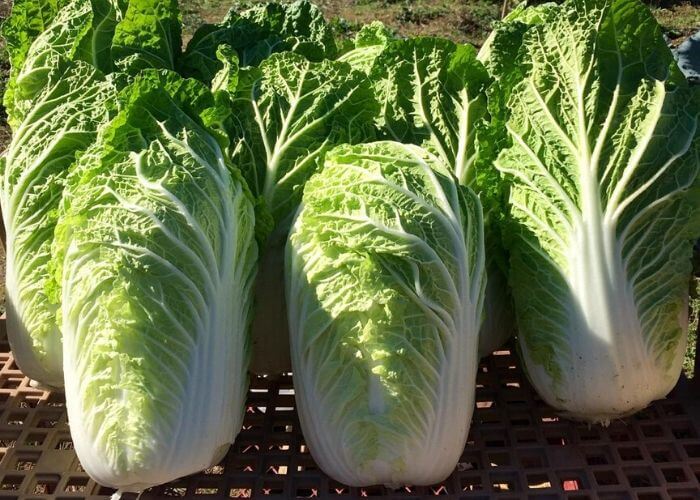
Here is another choice for a Napa that can be ready to harvest in 54-60 days. It is slightly larger than Rubicon, typically measuring 12 inches, and it’s known for being resistant to several diseases, such as clubroot, black speck, and fusarium yellows.
Bilko has a barrel-shaped head with a mild, sweet taste with pale green leaves. It does best when you grow it from the summer into the fall.
Growing Cabbage In Your Garden
Cabbage can seem like an intimidating task for gardeners, but many find that it is one of the easiest veggies to grow. As long as you provide the right environment for your vegetable, you can expect a bountiful harvest.
Here are some tips for you.
Final Thoughts
Picking the right cabbage varieties for your garden can be a tough choice.
Take a look at the length of your growing season, and be sure to pick ones that have plenty of time to mature.
Think about how you want to use the cabbages, and select the ones that will work best for your plans.

Written By
Bethany Hayes
Bethany is a suburban homesteader, growing over half of the vegetables, fruit, and herbs that her family of six needs each year. She raises chickens and homeschools her children. When she isn’t spending time tending to her garden, you can find her reading, crocheting, and canning.

I put some cabbage seeds in my little garden and a big plant pot but the large leaves feel furry and in the middle is a long thing with yellow flowers going all the way up simaler to a flower called Foxgloves
what type of cabbage is sweetable during winter season
When it comes to cabbage varieties that thrive during the winter season, you’ll want to look for cold-hardy options. Here are a few types of cabbage that are well-suited for winter:
Wintergreen Cabbage: This variety is specifically bred for winter conditions. It has a tight head and can withstand cold temperatures, making it a reliable choice for winter gardening.
Savoy Cabbage: Known for its crinkled leaves and excellent flavor, Savoy cabbage performs well in cool weather. It can tolerate frost and remains sweet and tender even during winter months.
January King Cabbage: As the name suggests, this cabbage variety is often harvested in January or even later. It has a beautiful purple and green coloration and is prized for its sweet taste and hardiness in cold weather.
Red Drumhead Cabbage: This cabbage variety has deep red-purple leaves and a round, compact head. It can handle frost and colder temperatures, making it suitable for winter cultivation.
Danish Ballhead Cabbage: With a tight, solid head and excellent cold tolerance, Danish Ballhead cabbage is a reliable choice for winter gardens. It can withstand harsh conditions and maintains its sweetness even in colder temperatures.
Remember, while these cabbage varieties are more winter-friendly, it’s essential to provide them with adequate protection, such as row covers or cold frames, during severe cold spells. By selecting the right varieties and taking proper care, you can enjoy delicious cabbage throughout the winter season.